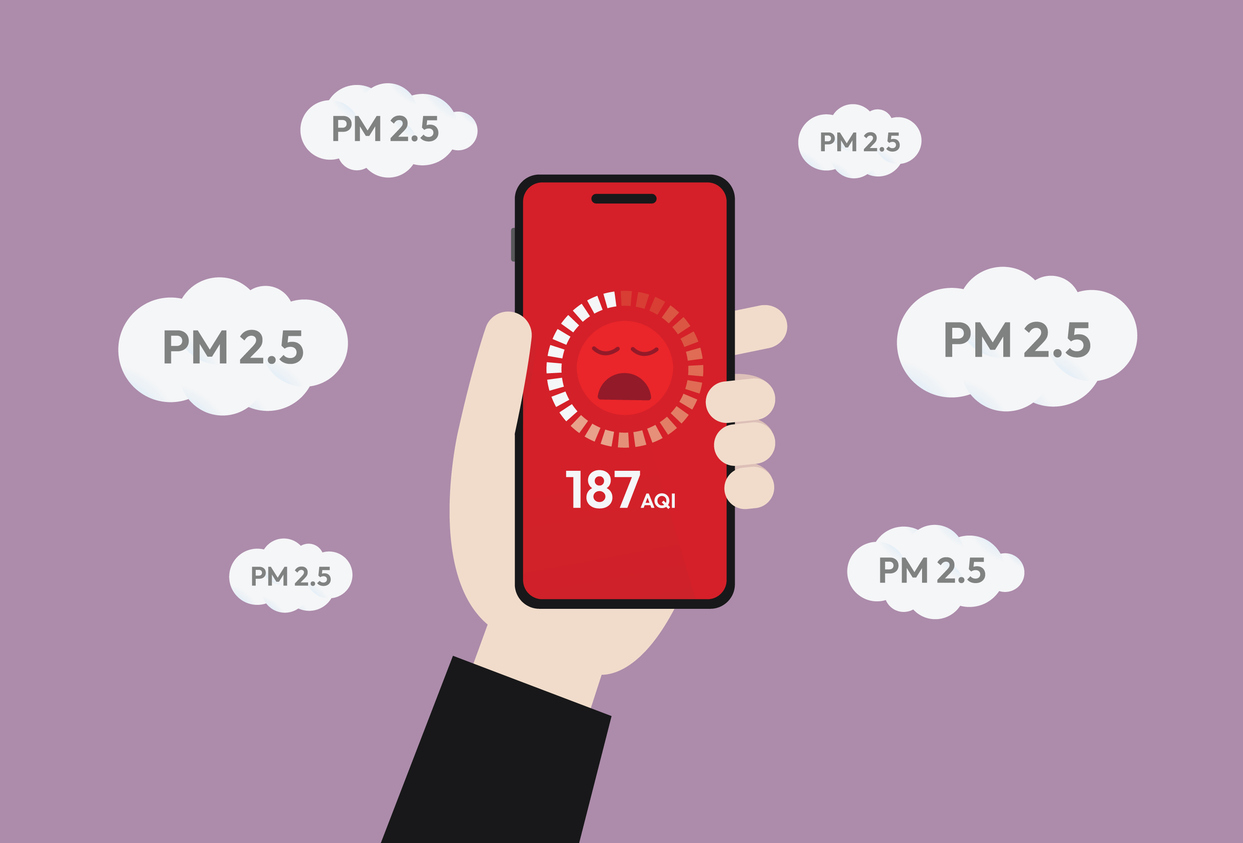
Events like the COVID-19 pandemic and widespread wildfires in the U.S. and Canada have brought much-needed attention to the importance of indoor air quality (IAQ) and the critical need to improve the air we breathe. The good news is that there are several simple methods for reducing PM 2.5 and improving indoor air quality.
As more research on air quality is conducted, scientists are taking a deeper look at the impact of particulate matter (PM) on both indoor and outdoor air quality and its effect on human health. The science of particulate matter can be a bit daunting, so let’s put things in perspective.
PM is a complex mixture of tiny particles and liquid droplets in the air. It is measured in sizes, such as PM10 and PM2.5. PM10 includes things like dust, pollen, and mold, while PM2.5 includes combustion particles and organic compounds like smoke.
To put the physical size of PM into context, a human hair is about 50-70 micrometers in diameter, while fine beach sand is a little larger, at about 90 micrometers. PM10 is less than 10 micrometers, while PM2.5 is less than 2.5 micrometers. These are very tiny particles that are invisible to the naked eye.
According to the National Institutes of Health (NIH), when it comes to the human respiratory system, PM10 particles can reach the upper airways and trachea, and can typically be eliminated by sneezing or simple nose blowing. But PM 2.5, also known as fine particles, has the potential to penetrate deep into the lungs and contribute to health problems.
PM 2.5 can enter indoor environments from outdoor sources such as vehicle emissions, industrial pollutants, and natural phenomena like wildfires. However, indoor activities contribute significantly to PM 2.5 levels as well. Common sources include:
- Cooking: Frying, baking, and grilling release fine particles into the air.
- Heating systems: Fireplaces and wood stoves can emit PM 2.5.
- Cigarette smoke: One of the most potent indoor sources of PM 2.5, affecting not just smokers but also those exposed to secondhand smoke.
- Candles and incense: Burning candles or incense can release fine particles into the air.
- Cleaning products: Certain aerosols and chemical cleaners release particulate matter when used indoors.
The concentration of PM 2.5 indoors, where people spend about 90 percent of their time, can sometimes surpass outdoor levels, especially in poorly ventilated spaces. Cooking without proper ventilation or smoking indoors can rapidly increase PM 2.5 concentrations, negatively impacting the indoor air quality.
So, what can you do to reduce PM 2.5 indoors? Monitoring PM 2.5 levels in indoor environments has become easier with the availability of affordable air quality monitors, which can provide real-time feedback on the concentration of fine particles, helping families or businesses take corrective measures.
In addition, there are several ways to minimize exposure to PM 2.5, including:
- Improve ventilation while cooking: An externally vented range hood is the best way to reduce cooking-related pollutants. Downdraft ranges and cooktops, over-the-range microwaves with built-in fans, ceiling fans and air cleaners can also reduce cooking-related pollution.
- Use an air cleaner: Portable room air cleaners, also called air purifiers, represent the quickest, most accessible option for improving indoor air quality in the home. When you are ready to purchase an air cleaner, always look for the AHAM Verifide® mark (learn more about AHAM Verifide® below).
- Avoid smoking indoors: Smoking indoors dramatically increases PM 2.5 levels. Ensuring homes and workplaces remain smoke-free is one of the most effective ways to reduce exposure.
- Clean regularly: Dusting with damp cloths and vacuuming with HEPA filter-equipped vacuum cleaners can help reduce particulate matter buildup.
- Check real-time outdoor air quality levels: With a simple zip code search, you can get up-to-date air quality data for where you live (including levels of PM2.5 and 10) at www.airnow.gov.
By understanding its sources, health risks, and methods of control, you can take practical steps to reduce PM 2.5 and improve the indoor air quality in your home.
About AHAM Verifide®
When you are ready to purchase an air cleaner, always look for the AHAM Verifide® mark. Room air cleaners certified through the AHAM Verifide® program have been rigorously tested by an independent laboratory to ensure the product will perform to the manufacturer’s product claims for the suggested room size. AHAM’s standard for measuring an air cleaner’s efficacy is called the Clean Air Delivery Rate (CADR). CADR indicates the volume of filtered air an air cleaner delivers, with separate scores for tobacco smoke, pollen and dust. The higher the CADR number for each pollutant, the faster the unit filters the air. The AHAM Verifide mark can be found on product packaging.
To find AHAM Verifide® room air cleaners, use AHAM’s online searchable directory to locate the model that is right for you.
Find a Certified Room Air Cleaner Here
Subscribe to the AHAM Consumer Blog





